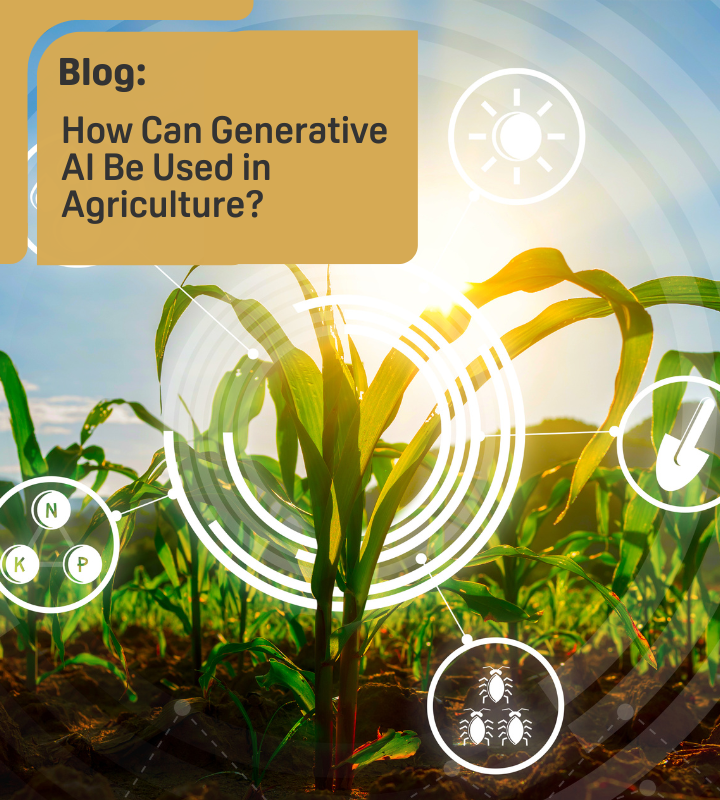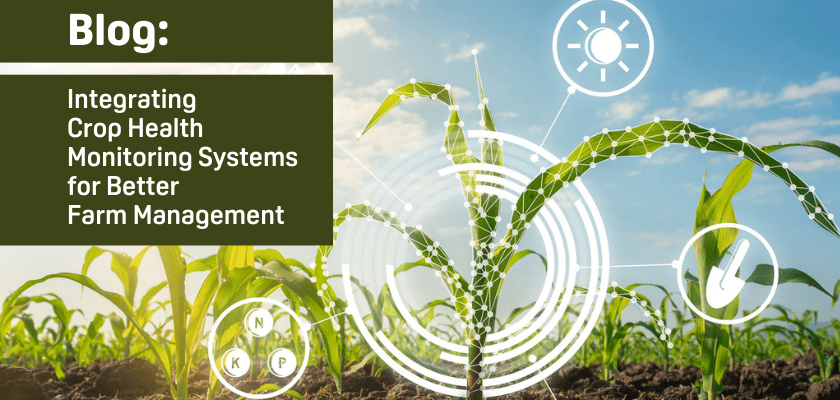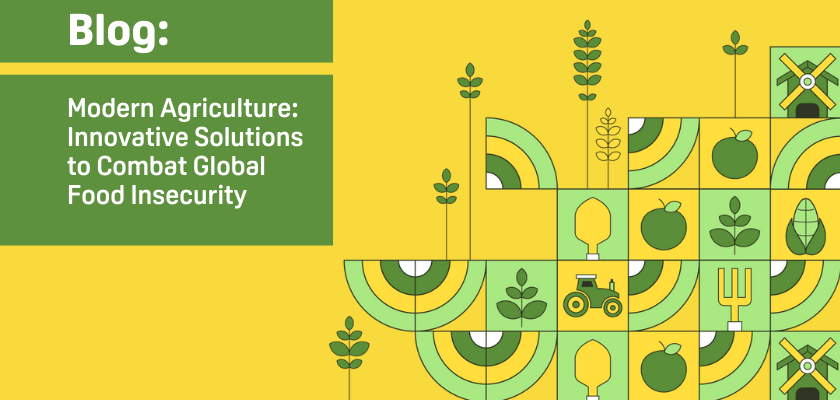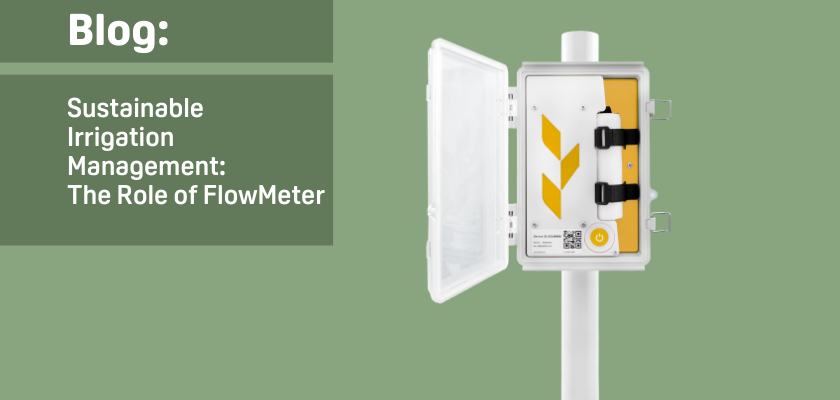

How Can Generative AI Be Used in Agriculture?
Generative AI in agriculture, exemplified by Doktar's tech, optimizes farming through data-driven insights. It enhances decision-making, automates tasks, promotes sustainability, adapts to climate shifts, improves soil health, effectively manages pests, optimizes resources, and reduces risks, heralding a more efficient and sustainable agricultural future.
Published on 30 May 2024
Generative AI in agriculture, exemplified by Doktar's tech, optimizes farming through data-driven insights. It enhances decision-making, automates tasks, promotes sustainability, adapts to climate shifts, improves soil health, effectively manages pests, optimizes resources, and reduces risks, heralding a more efficient and sustainable agricultural future.
Introduction to Generative AI in Agriculture
Generative AI, a branch of artificial intelligence, is revolutionizing various industries, including agriculture. By leveraging advanced algorithms, generative AI can analyze vast data, predict outcomes, and generate new, valuable insights. In agriculture, this technology promises to enhance productivity, sustainability, and efficiency, aligning perfectly with the goals of modern agritech. Integrating generative AI in agriculture technology transforms traditional farming practices, making them more precise and data-driven.
Doktar, an agricultural information company dedicated to digital agricultural transformation, is at the forefront of this revolution. Doktar leverages its proprietary digital products and services, such as Filiz, PestTrap, Orbit, and CropMap, to provide agronomic advice, operational optimization, and market insights to all stakeholders in the agriculture industry. By applying artificial intelligence models to data from IoT devices, hyper-local weather forecasts, satellite images, and soil analyses, Doktar empowers farmers to make informed decisions, optimize resource use, and enhance productivity.
The Role of Generative AI in Agritech
Agritech, or agricultural technology, encompasses the use of technological innovations to improve the efficiency and productivity of farming. Generative AI is crucial in this domain by providing advanced tools and solutions. From optimizing crop yields to enhancing soil health, generative AI is at the forefront of modern agricultural technology.
One key application of generative AI in agritech is crop monitoring and management. Tools like Doktar's Orbit use satellite imagery and AI algorithms to monitor real-time crop health, identifying nutrient deficiencies, pest infestations, and water stress. By analyzing the data, farmers can take timely and precise actions to address these problems, leading to healthier crops and higher yields. The AI models can also predict the best times for planting, irrigating, and harvesting, ensuring optimal use of resources and maximizing productivity.
Enhancing Soil Analysis with AI
Soil analysis is a critical aspect of farming, determining the health and suitability of soil for various crops. Traditionally, soil analysis was labor-intensive and time-consuming. However, this process has become more efficient and accurate with the advent of AI, specifically generative AI. AI-powered tools like SoilScanner can quickly analyze soil samples, providing detailed information on nutrient levels, pH balance, and other vital parameters. This data enables farmers to make precise amendments to their soil, ensuring optimal crop growth. By using AI in soil analysis, farmers can improve soil health, boost crop yields, and promote sustainable farming practices.
Predictive Modeling for Crop Management
Predictive modeling is another significant application of generative AI in agriculture. AI models can predict future crop performance, pest outbreaks, and weather patterns by analyzing historical data and current conditions. This information is invaluable for farmers, allowing them to effectively plan their planting schedules, irrigation, and pest control measures. For instance, Doktar’s CropMap uses predictive models to forecast crop yields and identify the best times for planting and harvesting. Predictive modeling helps farmers optimize their resources, reduce risks, and ensure a stable supply of agricultural produce.
Optimizing Resource Use through Technology
One of the primary benefits of integrating technology in agriculture is optimizing resource use. Generative AI can analyze data from various sources, such as weather forecasts, soil sensors, and satellite imagery, to provide actionable insights. For example, AI can suggest the optimal amount of water and fertilizers needed for specific crops, reducing waste and minimizing environmental impact. Doktar’s Filiz and Filiz Pro sensor stations monitor soil and weather conditions to provide tailored recommendations for irrigation and fertilization. Farmers can lower operational costs, increase efficiency, and promote sustainable farming practices by optimizing resource use. Using AI in resource management is a game-changer for the agriculture industry, driving it towards a more sustainable future.
Improving Pest and Disease Management
Pest and disease management is a significant challenge in agriculture. Traditional methods often rely on the extensive use of chemical pesticides, which can harm the environment and human health. Generative AI offers a more sustainable solution by enabling early detection and precise management of pests and diseases. AI algorithms can analyze data from sensors, cameras, and drones to identify early signs of pest infestations or disease outbreaks. Doktar’s PestTrap uses AI-powered image recognition to detect over 20 pests in real time, allowing farmers to take targeted action. This approach reduces the overall use of chemicals, protecting the environment and ensuring the safety of agricultural products.
The Benefits of Generative AI in Agriculture
The integration of generative AI in agriculture offers a multitude of benefits, enhancing various aspects of farming practices. Here are the key advantages:
· Enhanced Decision-Making:
- Provides farmers with accurate, real-time data and insights.
- Leads to improved crop yields and better resource management.
- Increases profitability through informed decision-making.
· Automation of Farming Processes:
- Reduces the need for manual labor.
- Lowers operational costs.
- Enhances efficiency and precision in farming activities.
· Promotion of Sustainable Farming Practices:
- Optimizes resource use, minimizing waste.
- Reduces environmental impact by decreasing chemical inputs.
- Encourages sustainable methods to ensure long-term agricultural viability.
· Adaptation to Changing Climatic Conditions:
- Helps farmers adjust to and mitigate the effects of climate variability.
- Ensures the resilience and sustainability of farming operations.
· Improved Soil and Crop Health:
- Enables precise soil amendments based on detailed analysis.
- Enhances crop health through targeted interventions and monitoring.
· Effective Pest and Disease Management:
- Allows early detection of pest infestations and disease outbreaks.
- Reduces the overall use of chemical pesticides, protecting the environment.
- Ensures the safety and quality of agricultural products.
· Resource Optimization:
- Analyzes data from various sources to provide actionable insights.
- Suggests optimal amounts of water and fertilizers needed for crops.
- Reduces input costs and maximizes resource efficiency.
· Risk Reduction:
- Predicts future crop performance, pest outbreaks, and weather patterns.
- Helps farmers plan their activities to minimize risks.
- Ensures a stable and reliable supply of agricultural produce.
Integrating AI in agritech is a technological advancement and a necessary step toward a more efficient and sustainable agricultural future. As the agriculture industry continues to evolve, the role of generative AI will undoubtedly become even more significant, driving innovation and progress in digital agriculture.
At Doktar, we are committed to revolutionizing agriculture through our advanced AI-powered solutions such as Filiz, PestTrap, Orbit, and CropMap. For those interested in exploring how Doktar's innovative solutions can transform your agricultural practices, visit our website for detailed information on all our products. Stay updated with the latest developments by following us on Instagram and LinkedIn, where we share insights, tips, and updates about our technologies and their impact on modern farming. Our mission is to ensure every agronomic decision is based on accurate information and optimization for a healthier, sustainable, and tastier world. Join us in transforming agriculture and achieving a more sustainable future.

Integrating Crop Health Monitoring Systems for Better Farm Management
Crop health monitoring systems revolutionize modern agriculture by enabling real-time insights into plant health, reducing losses, and promoting sustainability. Tools like Doktar’s CropMap and Orbit integrate advanced technologies, empowering farmers with data-driven decisions. By enhancing efficiency and sustainability, these systems are essential for future-proofing agricultural operations.

Modern Agriculture: Innovative Solutions to Combat Global Food Insecurity
Modern agriculture combats global food insecurity with precision agriculture, sustainable practices, and biotechnology. Tools like IoT, automation, and crop innovations optimize resource use, enhance resilience, and ensure stable food supplies. By integrating smart technologies, agribusinesses address challenges like climate change and resource scarcity, paving the way for a sustainable food future.

Sustainable Irrigation Management: The Role of FlowMeter
Flow meters transform irrigation by enabling precise water measurement, reducing waste, and optimizing crop yields. Tools like Doktar’s FlowMeter empower farmers to enhance water-use efficiency, conserve resources, and lower costs. By integrating flow meters into modern farming, agribusinesses achieve sustainable irrigation solutions, address environmental challenges, and ensure long-term agricultural resilience.
